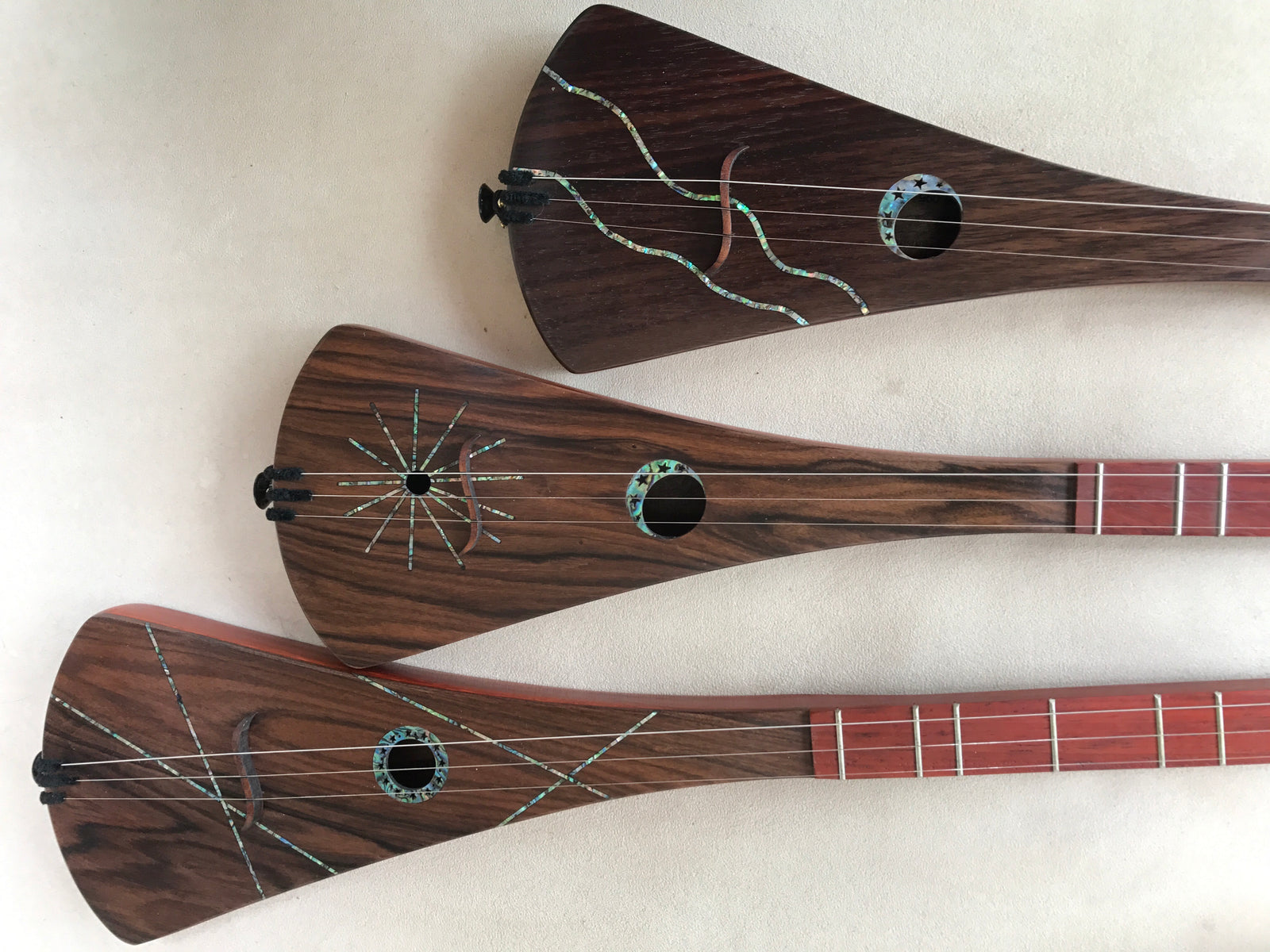History of the Strumstick by Bob McNally

I began developing The Strumstick in 1981.
It started as a variation on my patented design of the Backpacker Guitar (1980).
I was looking to make a minimal instrument that would be very accessible to non- musicians.
I made a small three-stringed instrument on the principles of the appalachian dulcimer called “The Stringed Pennywhistle.”
This name was meant to suggest a stringed equivalent to the Irish tinwhistle (not a wind instrument with strings on it!)
Like the dulcimer, it combined diatonic fretting with strings tuned to a drone,
but it was held like a guitar for ease of playing.
The body was a reduced size interpretation of the Backpacker Guitar.
Backpacker® Guitar
The success of the little Stringed Pennywhistle (about1,000 made) inspired the making of an even simpler instrument, with one string,
which was the original Strumstick. It was a mere 1/2” wide, over most of it’s 28” length.
The single string was as simple as you could get, and fun for playing melodies,
but had no possibility for harmony or real rhythmic strumming.
Single String Strumstick
After making a hundred or so of the single string models, I
started to think about the ideal beginners instrument.
It would have to be:
Easy to play, with a gentle learning curve.
Have a distinctive and quality sound
Look attractive... charming and not overwhelming!
Be well made, but as low cost as practical.
Be versatile enough that players could grow musically.
It had to allow for harmony, chords, melody and rhythm playing.
This was quite a design equation to solve. It required decisions about compromises
between opposing goals...how to make it well, but also inexpensively.
How to make it easy to play, but also be versatile enough to perform with.
Ultimately, it meant determining a multiple sweet spot,
and getting innovative with construction techniques.
What we now know as the McNally Strumstick emerged as a three-stringed instrument,
larger than the one-stringed Strumstick and with a larger soundbox than the
Stringed Pennywhistle.
The G Strumstick
Tuned G,D,G, it was an instant hit.
It was playable by beginners right from the start, yet versatile enough for
experienced players. I tested it with more and more complex music,
and still have not exhausted all its capabilities, many years later.
It was also beautiful and well made; the design has been honored by acceptance into many of the highest quality juried art exhibitions in the country,
and numerous museum showings.
After the first few were done, and it was clear the design was a good one, I wanted a second model, designed to play lower, in D. A deeper voice to compliment the high voice of the G strumstick. I planned it with a bigger body and a longer string length, still balancing appearance, tone, ease of making, and ease of playing.
The D Strumstick
The choice of the two Keys, G and D, make it reasonably likely that a person could sing a given song on one key or the other. Especially since either on can tune up or down over a moderate range of keys, and a capo could be used to change the sound. Between the two of them, any key can be achieved by retuning.
Somewhat later, the Kidpicker Strumstick was designed for little hands and the smallest practical size, playing in G, or up to C, with a high, mandolin-like sound. More recently, I designed a Ukulele tuned model with 4 strings, chromatic fretting, with steel strings to provide a unique voice for the Ukulele world.
Ukulele Strumstick (The Strumulele!)
I designed decorative variations such as rosette soundhole inlays, using fancy woods (Padouk, Rosewood, Koa) for tops and backs, and even elaborate shell inlay (because sometimes people like shiny stuff!).
Koa D Strumstick
Fancy Inlay Stripes
As professional use became more widespread, I wanted a way of amplifying the
Strumstick that was better sounding than stick-on guitar pickups.
I worked with Schatten, a respected pickup manufacturer,
and they designed a custom made pickup especially for the Strumstick.
The easy access to electronic equipment the pickup affords opens a broad new
realm of tonal possibilities, and has become a very popular addition to the line in recent years. Here is a video example.
Sales, New Products, Instructions, Videos, and Free Offers, Useful Content.
